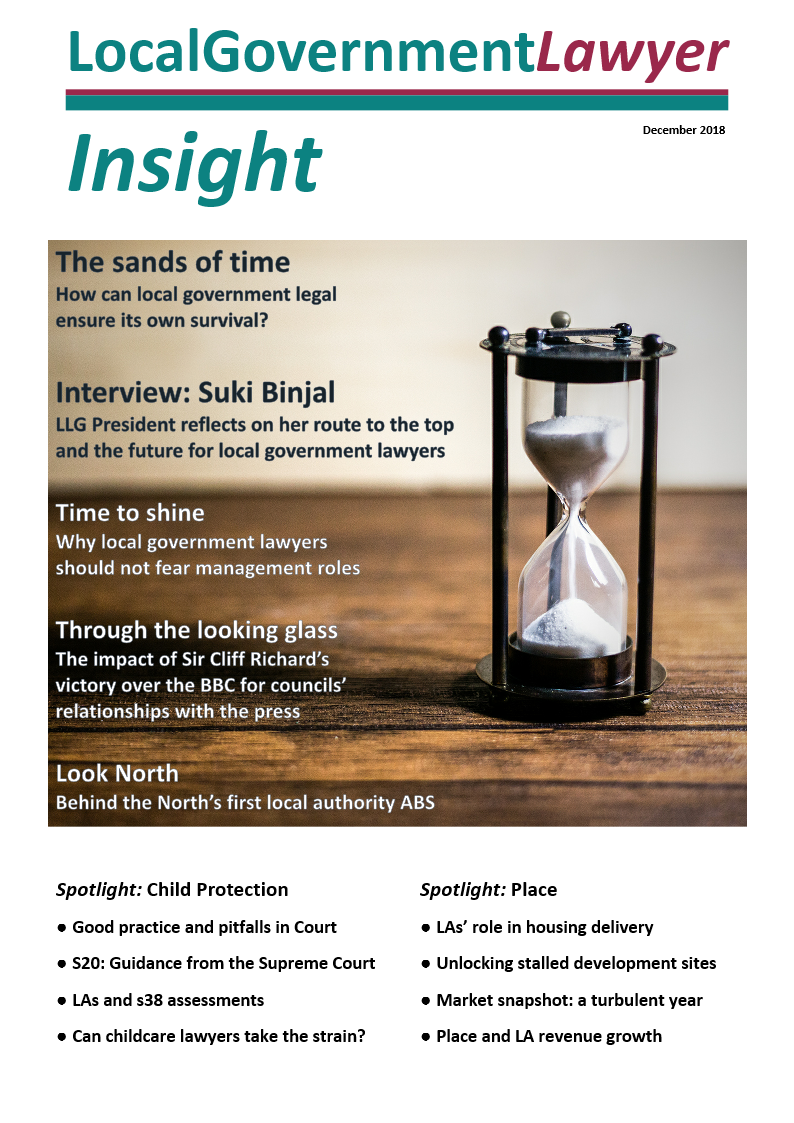Unlocking stalled development sites
- Details
Chris Plumley explores some of the most common traps in relation to stalled development sites and suggests some effective solutions.
 In many parts of the country the public sector is the driving force for urban growth. The trade press is awash with new mixed use, housing and investment based developments with local authorities place-shaping to bring "good growth". We are still, however, seeing too many stalled developments for a variety of very understandable but avoidable reasons.
In many parts of the country the public sector is the driving force for urban growth. The trade press is awash with new mixed use, housing and investment based developments with local authorities place-shaping to bring "good growth". We are still, however, seeing too many stalled developments for a variety of very understandable but avoidable reasons.
Strategic and policy hurdles
Local government has many strong, charismatic leaders, members and stakeholders who drive the "just make it happen" approach to development. When they stay practically and closely involved in a scheme, it can be of tremendous benefit. Larger projects need strong leaders, advocates and champions. If, however, the leaders dip in and out and don't stay involved in the detail, that "leadership" can become a divisive distraction.
The best and most inspirational regeneration leaders are the ones who we see giving authority and direction to their teams to empower them to deliver. Where that does not happen we still see officers unable to implement and schemes stalling. Similarly, the drive towards a particular outcome must have a robust policy and auditable background to it. We have seen a number of schemes recently where the intended commercial or political outcome was not reflected in the stated policies of the council. This means that officers were trying to implement an attractive scheme only to hit the policy barrier. For example, members wanted to promote the council's support of a development by the use of CPO powers.

Sadly the planning policy did not support that position and so the desired outcome of a large comprehensive development project had to be scaled back. The reduced scale scheme will still be great but it is now left with a slightly negative "if only" feel to it.
Option paralysis
Twenty years ago, when I started advising on public sector regeneration projects, there was a relative "simplicity" to them. Almost always they were governed by a complex, but accessible, development agreement. The developer was appointed following an advert in the Estates Gazette, transactions were cordial and the sun always shone. Well maybe not.
The council would usually hold or assemble the land and the selected developer had the skills, occupiers and funding to build out and away you went.
We are getting quite a lot of feedback from colleagues in the industry that a stalling factor is simply the number of options available to bring about developments. It has become almost impossible for some authorities to make a decision as to how to proceed due to the agony of choice and option overload.
With policy changes, new funding solutions, numerous deal structures, collaboration protocols, political directions, procurement concerns, increasingly numerous consultees and stakeholders – no wonder things grind to a halt. We also see advisers looking to sell pre-packaged solutions rather than analysing the specific problem and coming up with something bespoke and suitable.
Whilst I don’t want to hark back to the good old days, this cornucopia of options does highlight the need for proper strategic direction, quality project management, narrowed option selection criteria and good governance. All of this should be a given alongside the review of the commercial terms. Ultimately, form does follow function, so the legal and commercial solutions should always be kept in focus.
Assuming all of that is in place then the parties should have more confidence to make decisions and stick to them. This, in turn, should help to unlock the stalled elements of the scheme.
Implementation
With a supported policy and strategic position comes the ability to actually implement that solution. We are still seeing significant and avoidable delays in projects where there isn’t proper project governance or delivery resource in place.
There are lots of reasons for this and I should not over simplify the root causes. There are, however, some common themes. For example, many in-house teams do amazing jobs of managing and delivering large-scale infrastructure and regeneration projects. Where there isn't the in-house resource and it has to be "bought in", we see delays in that procurement process. This often boils down to concerns over the routes to procure advisers and the linked up front costs. For example, a housing development was delayed for over a year whilst individual advisers were appointed, all from different disciplines, all from different call off panels and via protracted mini-competitions. No-one doubts the need to achieve value for money but we cannot have schemes stalling (and income or capital receipts not being collected from a completed scheme) by basic project inception delays.
Being commercial about the use of multi disciplinary teams, using pre-procured call off panels, allocating proper project budgets and front loading the project management and governance all help to get from concept to inception much quicker. Once the team was assembled it worked well, but the time taken to do so wasted time and money.
What about in-house delays? With the enormous cuts in public funding, council officers are often overstretched, covering more than one job or "acting" up into another role. This has become the norm for many councils and the position in some cases has become untenable. Regeneration projects are large, complex, long term endeavours and can be very time consuming. This means that lead officers either have to have the time to do it or the budget to appoint a proper external adviser team. A lot of time and budget is wasted trying to get by when the officers are not given the space and authority to deliver.
Who's in charge here?
The final point to mention is the number of agencies involved in delivery. It is great news for our industry that there are now numerous routes to delivery regeneration: Homes England and the combined authorities, local councils, trading, property, investment and development companies set up by councils, public / private corporate and contractual joint ventures and funding, investment and collaborative vehicles.
To this heady mix, add the fact that we have increasing layers of local devolved government and you can see where there is room for confusion. Who is responsible for what, what are the available funding routes and who should take control? Now, this last point is actually a positive to end on. We are seeing increasing support for the combined authorities taking more control of planning, procurement, remediation funding, land assembly and spatial strategy.
Conclusion
As regions look to expand and the public sector continues to play a vital role in housing delivery, employment creation and connectivity, we cannot afford avoidable stalled sites. So what is the answer? Proper funding and resourcing of local government would help. There is also an increasing school of thought as to the roles of the Mayors and the combined authorities.
Without treading on the toes of local government could they take more of a role in unlocking stalled development? Could they bring together the mixture of policies? Could they create blanket policies to ensure delivery? Could they create the toolkits to simplify the processes?
So long as they work alongside the democratically elected bodies that know the local areas and understand the solutions, maybe this shift could be the one that unlocks stalled sites once and for all.
Chris Plumley is a partner at Trowers & Hamlins. He can be contacted on 0121 214 8817 or by email at
www.trowers.com/people/christopher-plumley/

This article was first published in the December 2018 edition of Local Government Lawyer Insight, which can be accessed at http://www.localgovernmentlawyer.co.uk/insight Insight is published four times a year and is circulated free-of-charge to all Local Government Lawyer newsletter subscribers (click here to subscribe) in electronic format. A single hard copy is also circulated to all local authority legal departments in England and Wales. Also in this issue: Sands of time Interview: Suki Binjal Time to shine Through the looking glass Look North Spotlight: Child Protection
Spotlight: Place
|
Sponsored articles
Walker Morris supports Tower Hamlets Council in first known Remediation Contribution Order application issued by local authority
Unlocking legal talent
Contracts Lawyer
Lawyer (Planning and Regulatory)
Legal Director - Government and Public Sector
Locums
Poll





























